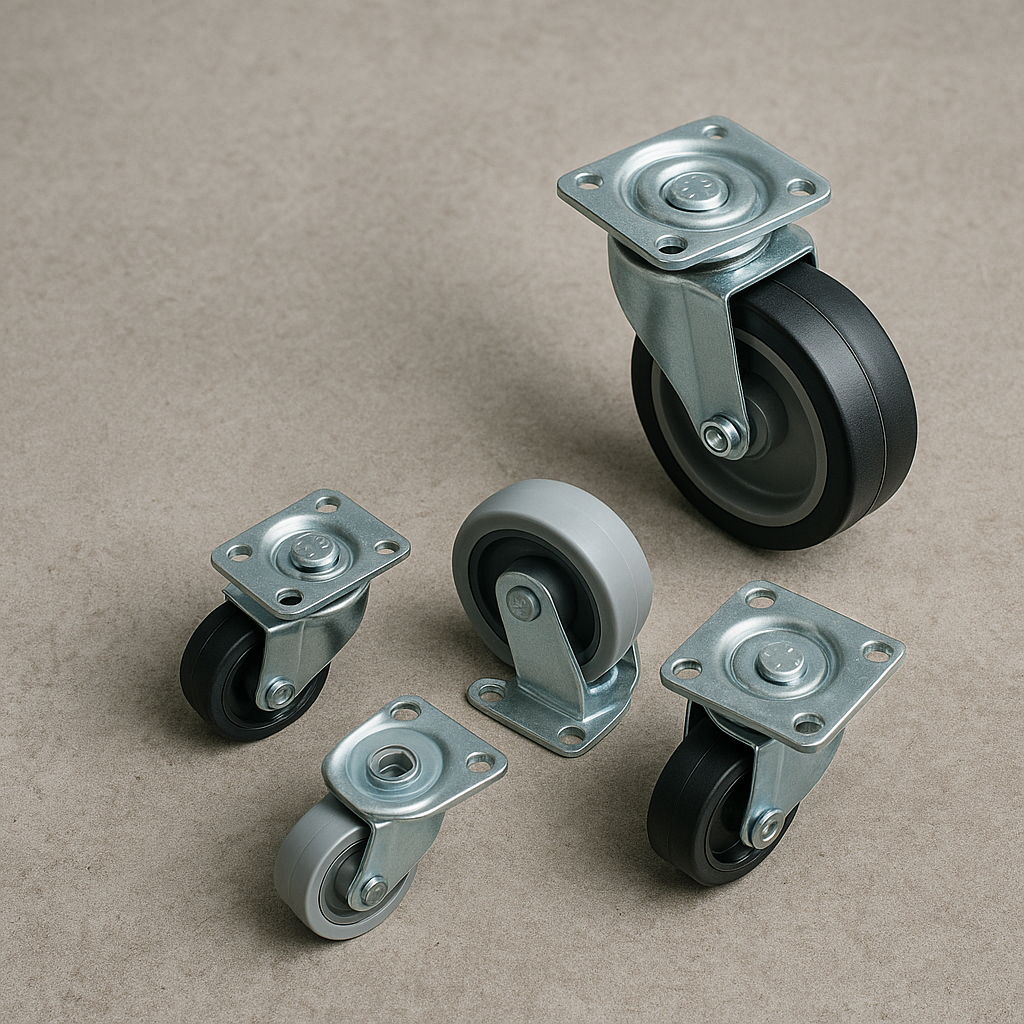
Selecting the Right Caster: What You Need to Know
When it comes to mobility in industrial, commercial, or residential environments, the right caster can make all the difference. Whether you're outfitting carts, shelving, machinery, or office chairs, selecting the correct caster isn't just about size—it’s about safety, performance, and longevity. Here's what you need to know before you roll out your next project.
Understand Your Application
The first step in selecting the right caster is understanding where and how it will be used. Ask yourself:
What is the total load weight?
Will the caster be used indoors or outdoors?
Is the environment clean, wet, oily, or abrasive?
Does it need to withstand chemicals or extreme temperatures?
Knowing the environment helps determine the best caster material and design for the job.
Weight Capacity and Load Distribution
Casters come with different weight ratings. It’s important to calculate the total load your equipment will carry and divide it among the number of casters being used. For safety and durability, always choose a caster with a capacity higher than your calculated need.
Example: If a cart weighs 400 lbs and uses four casters, each caster should support at least 100 lbs. However, it's recommended to choose casters rated 25–30% higher to accommodate uneven surfaces or shifts in load distribution.
Wheel Material Matters
The material of the caster wheel directly affects how it performs on various surfaces:
Rubber: Quiet and smooth on hard floors, ideal for indoor use
Polyurethane: Great for mixed flooring and higher loads; resists wear and chemicals
Steel or Cast Iron: Built for rough environments and heavy-duty loads
Nylon or Plastic: Lightweight, corrosion-resistant, good for wet areas
Choose a wheel that balances performance, floor protection, and resistance to your operating environment.
Mounting Options
Casters can be mounted in several ways depending on the application:
Top Plate: Most common; offers a sturdy, flat surface connection
Stem: Used in furniture and light-duty applications; options include threaded stems, grip rings, or expanding adapters
Bolt Hole: Quick installation with a single bolt; ideal for some light to medium-duty uses
Ensure your mounting hardware matches the equipment you’re outfitting.
Fixed vs. Swivel (or Both)
Fixed casters: Move in a straight line, ideal for stability and straight tracking
Swivel casters: Rotate 360°, offering better maneuverability
Combination: Two swivel casters paired with two fixed casters is a common configuration for controlled movement and easy steering
For tight spaces or frequent directional changes, all-swivel casters may be more suitable.
Don’t Forget Brakes and Locks
Safety and control can be enhanced with caster brakes, which prevent rolling when stationary. Total-lock casters even prevent both rolling and swiveling, ideal for mobile equipment that must stay secure when in use.
Need Help Selecting the Right Caster?
At G&H Distributing, we offer a full range of casters for industrial, commercial, and residential needs. From grip ring stems to heavy-duty plate mount options, we’re here to help you roll in the right direction.
Shop our caster selection today or contact a sales associate for guidance.
